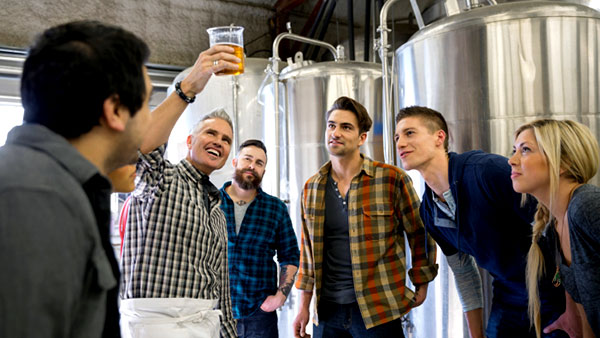
Safe and successful tours can build goodwill with customers.
Most breweries, wineries or distilleries offer tours and a tasting room where guests can enjoy a sample of the product or purchase drinks made on-site. These operations present a different set of exposures than a typical beverage manufacturing facility. If you own a beverage business, closely evaluate your operation to ensure guest safety.
The most common source of liability claims for these businesses are slip-and-fall hazards. To complicate this exposure, many establishments also offer tours that lead guests through the manufacturing side of the establishment, the vineyard or storage areas.
Tours are a terrific way to display your establishment, help guests understand how the product is made and further engage them in your craft. Use caution when creating your facility tour to ensure guest safety.
Here are some items to consider when planning your tour route, tasting room or taproom space:
- Use nonskid flooring wherever possible, and make sure all spills are cleaned up immediately.
- While it’s best to have a level flooring surface throughout, if there are changes in elevation, make sure all steps are marked appropriately and are well lit.
- Ensure that handrails on stairways are secured, that stair treads are a solid surface or that carpeting is properly secured and free of tears.
- Be sure walkways around the exterior of the establishment (including parking areas) and outdoor gathering areas are in good condition and well lit.
- Use surveillance cameras where possible.
- Assign guides for all tours, and train them in safety procedures. Limit the number of guests per tour. Keep guests at a safe distance from operational traffic, moving machinery and hot surfaces.
- Don’t permit guests to carry food or beverages with them during the tour.
- Post warnings and liability disclaimers at the tour site and on your website to assure visitors understand potential physical and operational hazards.
- Provide any necessary safety gear, such as safety glasses or hearing protection.
- Be sure to follow any state or local safety regulations or health restrictions, including occupancy restrictions for fire evacuation.
By ensuring a safe visit, you protect your business while building customer goodwill.
This loss control information is advisory only. The author assumes no responsibility for management or control of loss control activities. Not all exposures are identified in this article. Visit your local, independent agent for insurance coverage information and advice.
